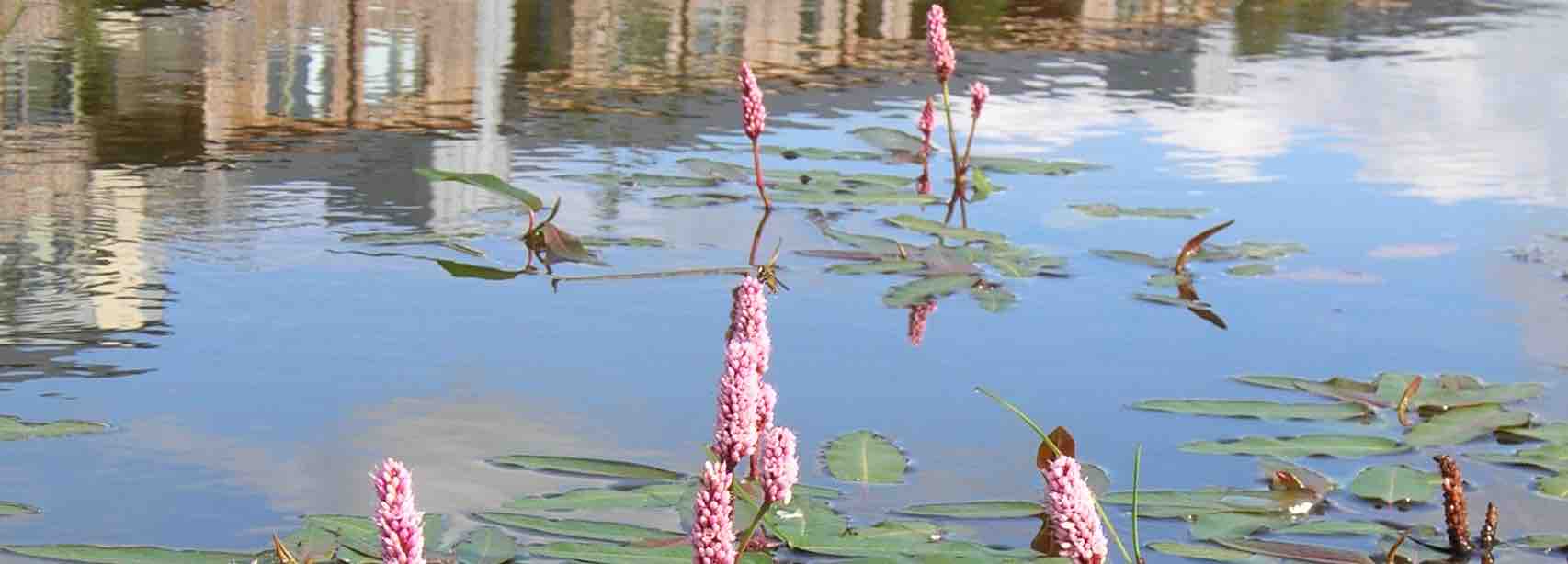Holistic Flood Management
SUDS aren't the only way to reduce flooding and its impacts. A whole suite of causes require a similar suite of responses.
Climate breakdown is one of the causes of flooding in recent decades. The more we can tackle our impact on global weather systems the less extreme our weather patterns will be. Happily, solutions exist in abundance; and wonderful synergies come into play whereby many of the measures that create climate resilience also serve habitat protection and regeneration and ecosystem repair.

Landuse is is another priority area when considering flooding issues. The problem isn't so much that the water can't exit our cities and towns fast enough, it is that it enters them too quickly. By holding water within the landscape; in fields, bogs, woodlands, hedgerows and wetlands, we can slow down the flow off the land and into the urban spaces that otherwise suffer. (see Farmscale Buffer Zone page.)
We can offer consultancy and advice, workshops and public talks on implementation of Holistic Flood Management options for your local river or stream catchment area.
Water Flow & Filtration on a Catchment Scale
Improving our own wastewater and stormwater is important, but imagine the difference you could make if you took the whole valley into account to really improve the overall water quality in your river basin or catchment. Catchment management can be used to maximise the pollution reduction and environmental protection in the whole valley for an integrated approach to improving water quality.

Reintroduction of wetlands within the river basin is one of the most straightforward ways to improve water quality and habitat value of streams and rivers, and is being increasingly practiced worldwide for flood control, pollution reduction and habitat enhancement. Introduction of other habitats such as woodlands, hedgerows and seasonally grazed grasslands can offer similar benefits. Buffer zones can be used on farmland and adjacent to any dispersed sources of pollution to offer further water filtration. Stormwater wetlands for runoff from roads and paved areas can also offer extra filtration, as can the use of effective sewage treatment within the whole area.
FH Wetland Systems can offer design and consultancy for catchment scale projects where full community participation is available. Alternatively individual, site-specific stream or river improvement projects can be carried out to improve the water quality of the catchment downstream of that point. These are useful where one landowner wishes to make positive changes without the challenges and time constraints of involving others.
| Email reeds@wetlandsystems.ie to be included in our mailing list for future workshops/training seminars. Licensed under Creative Commons Attribution 4.0 International License |
Contact: +353 (0) 65 7075631
reeds@wetlandsystems.ie Knocknaskeagh, Lahinch, Co Clare, Ireland FHWS Privacy Policy |
 |
|---|
